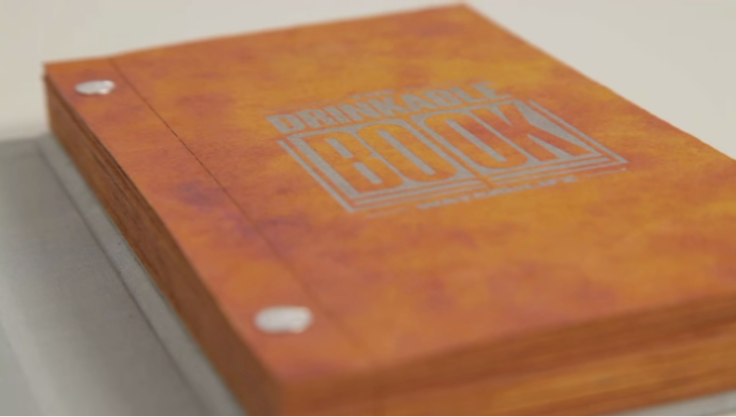The Book Of Life: Pages Of 'Drinkable Book' Act As Filter To Turn Raw Sewage Into Drinking Water

An estimated 783 million people do not have access to clean drinking water, a problem that kills thousands each day. To address the issue, Water is Life along with scientists from Carnegie Mellon and the University of Virginia created the "Drinking Book," a technologically advanced book with pages capable of filtering up to 99.9 percent of bacteria and pathogens out of even the most contaminated sewage.
At first glance, the Drinking Book looks like your typical instruction booklet on water safety. In reality, however, the book’s orange-tinted pages contain silver and copper nanoparticles that act as a filter to strain bacteria and pathogens from water.
“After passing water through our filter we found a reduction of greater than 99.9 percent in bacteria count,” the paper’s inventor, Dr. Theresa Dankovich, explained in a YouTube video on the Drinkable Book. According to Dankovich, this is on par with the drinking water in the U.S.
The Drinking Book provides users with safe drinking water in two easy steps: First, you need to tear out one of the perforated pages and fit it into the customized filter box. Next, simply pour contaminated water through the filter and what comes out on the other end is safe to drink. Each filter is capable of giving someone up to 30 days of clean water. According to information released Sunday at the American Chemical Society’s national meeting, the paper’s patent pending technology is extremely cheap to produce, potentially making it the most cost-efficient water purification technology on the market.
According to the United Nations, contaminated drinking water is responsible for up to 80 percent of all deaths in developing countries. Around 80 percent of all sickness and disease worldwide is related to contaminated water, and diarrheal illnesses kill about 1.5 million individuals, mostly young children, each year.
Along with working as a filter, the Drinking Book’s pages contain water safety instructions in both English and the local languages. These instructions give readers important water safety knowledge, such as keeping trash and feces away from your water source.
While the Drinking Book is useful in removing bacterial pollutants, research presented at a past meeting of The American Chemical Society has shown that the cilantro plant is highly effective in removing metallic pollutants, such as lead and arsenic, from drinking water. The outer wall structure of the plant makes it ideal for absorbing metals, and it is far cheaper than activated charcoal filtering systems, such as what’s found in a Brita filter.
The Drinkable Book’s design has been tested on over 25 water sources in five countries, with the most recent field work taking place in southern Bangladesh. According to a press release, students from Carnegie Mellon are working to perfect the book’s design, but more development is needed before the Drinkable Book is ready for commercial use. To learn how you can help to provide a water book to a community in need, visit WATERisLIFE.com



























